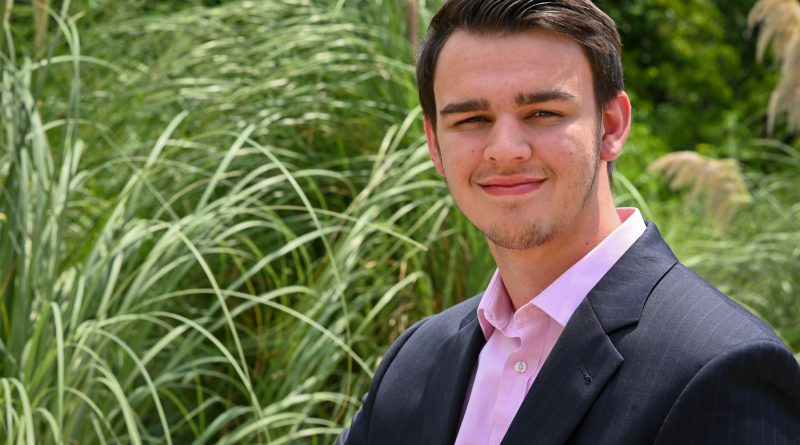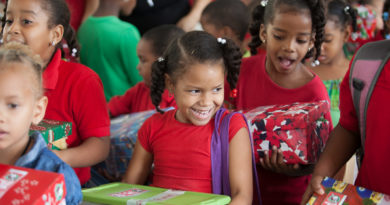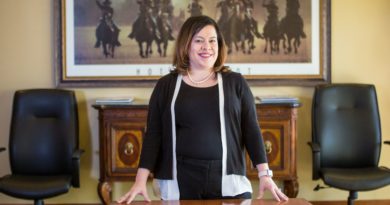Bioscience District Fuels Innovation, Entrepreneurship
By MANDY SHELTON | Photography by NAN DICKSON
A renovated Tex-Mex restaurant in the Temple Medical & Education District now houses $1 million worth of state-of-the-art lab equipment.
Temple Health and Bioscience District is a publicly funded, not-for-profit incubator that offers doctors and scientists access to low-cost research facilities. That commitment to innovation in Bell County can be seen in the building’s décor, featuring historical images of Temple’s scientific advances sourced by the locally owned Guenther Design Group.
“We spent hours in Temple Public Library looking through pictures,” said THBD Executive Director Tami Annable. “We were able to go to Baylor Scott & White to look through their archives, then we went to the Railroad Museum and found photo slides.” In a final homegrown touch, the black-and-white photos, now enlarged and adorning the walls, were captioned with placards 3D printed by THBD intern George Robinson.
Visitors are welcomed to schedule tours (or take the virtual tour) at templebioscience.org.
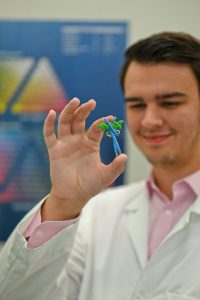 Internship helps George Robinson pursue his future career goals
Internship helps George Robinson pursue his future career goals
As Temple continues its leadership in the science, technology, engineering and math fields, educators debate the incorporation of arts into the omnipresent STEM acronym, envisioning a future that runs on STEAM. For one local entrepreneur in training, that future is coming into focus.
George Robinson enrolled in the Texas Bioscience Institute when he was a student at Troy High School. “It’s people from all around the area, so you get a whole collaboration of ideas,” Robinson said of the opportunity, though he didn’t leave THS completely behind.
“I had one art class at Troy,” Robinson said of an advanced placement studio session where he worked on portraits and pencil drawings. He has created concept art for hire, and his artistic background came in handy when he arrived at the Temple Health and Bioscience District in the summer of 2018.
“Bioscience Institute has an internship program where you train under a mentor in a work-study program,” Robinson explained. He learned to print scale models of cells on the Stratasys 3D printer, drawing on the knowledge he gained in art class. “You have to go through a 2D stage of drawings and concept designs to really start making the 3D models,” he explained. Robinson also assisted THBD tenant SiMMo3D with the printing of its medical training platform, the simuboard.
Now in college at Angelo State University, Robinson is turning his sights to alternative engine designs and the future of energy. “There are a lot of laws in the universe you can kind of bend to your will,” he said. As a “scientific capitalist,” he envisions ways to apply his physics training to engine propulsion designs, exploiting natural laws instead of natural resources.
“A nuclear power plant is just a steam engine,” Robinson said. “There’s got to be something new.”
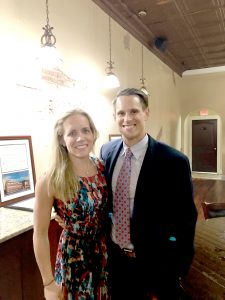 A ‘joint collaboration’ for Drs. Jonathan and Jessica Hughes
A ‘joint collaboration’ for Drs. Jonathan and Jessica Hughes
As children like to sing, the thigh bone is connected to the hip bone — usually.
For some adolescents, “dem bones” from the skeleton song do not always stay put. Doctors Jonathan and Jessica Hughes, a pair of married orthopaedic surgery residents at Baylor Scott & White in Temple, wanted to make sure that thigh bones — or femurs — stayed connected to hip bones. Together, they worked on a project concerning slipped capital femoral epiphysis, a condition often seen in teenagers.
Specifically, the doctors Hughes were looking at the screws that hold bones in place after a child has undergone surgery but continues to grow. “We had seen a few patients come into clinic with broken screws after SCFE fixation, either within a few weeks of surgery or within a few months, and were perplexed as to how that would happen. We did some investigating in the current orthopaedic literature, and very few studies described screw breakage after fixation of SCFE,” said Dr. Jonathan Hughes.
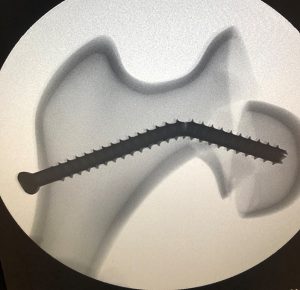 He received a research grant from THBD, including subsidized use of the Instron E1000 Linear-Torsion Material Testing System to pressure-test 3D-printed femurs.
He received a research grant from THBD, including subsidized use of the Instron E1000 Linear-Torsion Material Testing System to pressure-test 3D-printed femurs.
“I initially learned of Temple Health during a grand rounds conference we were having at Baylor Scott & White,” he said. “No one in my department had used an Instron machine before, or really done any research in collaboration with Temple Health, so I was thrilled to be a pioneer for our department.”
Hughes graduated this past June and is now an orthopaedic sports medicine fellow at the University of Pittsburgh.
Dr. Jessica Hughes is a fifth-year resident at Baylor Scott & White. “Even though I was then one mostly using the lab, she was instrumental in this project,” he said. “It was really a joint collaboration.”
Internships offer learning, networking opportunities
In addition to the internship opportunities available to high school students through Texas Bioscience Institute, Temple Health & Bioscience District Scholars Program offers summer internships to college students in STEM fields. Over this past summer, eight THBD Scholars received stipends to live, work, and find mentors right here in Bell County.
One of the goals of THBD is to foster connections with industry experts, so students from all over the country might consider the city a place to practice medicine or launch a biotechnology start-up. Email THBD Executive Director Tami Annable at tamia@templebioscience.org for an application.

